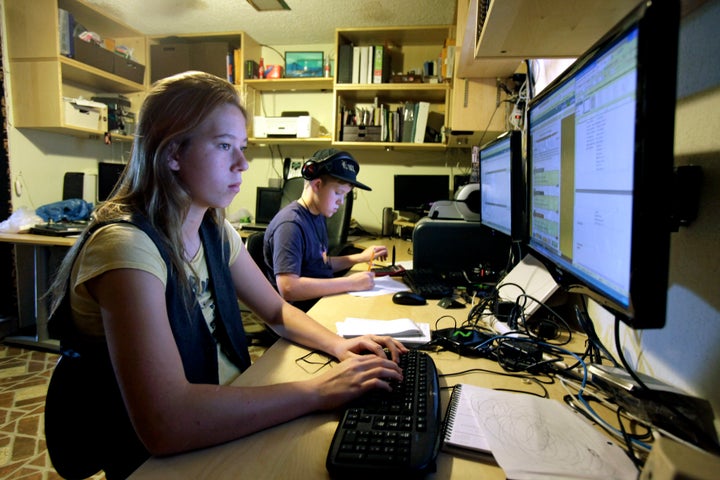
Encyclopedias, record labels and publishers were once in the business of producing unique content that generated big revenues. All are being bludgeoned by the digital age that brought abundance, mass participation, democratized production and the rise of a new delivery channel -- the Internet.
A similar fate could soon await Canada's universities. On the surface, they may seem in good health. Competition is fierce and lecture halls are packed with young, tech-savvy learners. But as the Globe and Mail's series on higher education has clearly revealed, deep anxieties exist.
The university is in danger of losing its monopoly, and for good reason. The most visible threat are the new online courses, many of them free, with some of the best professors in their respective fields. Students are beginning to wonder whether to pay today's hefty tuition fees, especially if third-party testers will provide certificates, diplomas, even degrees.
But cheap online courses aren't the biggest challenge. There is a much deeper threat. There is a rapidly widening gap between the model offered by big universities and the natural way that young people who have grown up immersed in digital technologies best learn. If universities want to prosper, they need to embrace a new model of pedagogy.
Since the invention of chalk and blackboard, professors have given lectures standing in front of many students. The student's job was to absorb this content and regurgitate it on exams. It's a teacher-focused, one-way, one-size-fits-all model and the student is isolated in the learning process.
But in today's world, and for today's students, this broadcast model is flawed. Unlike their baby-boomer parents, who grew up as passive recipients of television, today's youth are shaped by interacting with digital tools and online experiences.
Research shows that because of this, young people think differently. They need to inquire, not rely on the professor. They need an animated conversation, not a lecture. They need an interactive education, not a broadcast dating back two or three centuries.
We can now use technology to free up professors from transmitting information to curating customized learning experiences. Learning can occur through software programs, small group discussion and projects. The role of professors actually becomes more important. But those who wish to remain relevant will have to start listening and conversing with students -- shifting from a broadcast style and adopting an interactive one. They need to tailor the education to their students' individual learning styles. They should encourage students to discover and collaborate outside the classroom.
Of course, a student still needs a knowledge base. One can't Google one's way through life. But what counts more is a person's capacity for lifelong learning, to think, research, find information, analyze, synthesize, contextualize and critically evaluate; to apply research to solving problems; to collaborate and communicate. This is particularly important for students and employers competing in a global economy. Workers and managers must learn, adapt and perform like never before.
To help in this transformation, we need an entirely new modus operandi for how the content of higher education -- the subject matter, course materials, texts, written and spoken word and other media -- is created. A $150 textbook is obsolete compared to the rich information available online, both inside and outside the classroom.
The 21st-century university should be part of a network and an ecosystem, not a tower. Indeed, there is an enormous opportunity to assemble the world's best learning materials and software online. This could give students a customized learning path with support from a network of instructors and educational facilitators. Some would be resident at the student's own campus and some might be halfway around the globe.
Universities and professors should contribute to an open platform of world-class educational resources that students everywhere could access throughout their lifetime. Call it a Global Network for Higher Learning.
The network would have stages or levels. The first is content exchange -- professors park their teaching materials online for others to use freely. The second level is content co-innovation, where teachers collaborate and share ideas across boundaries to co-create new teaching materials using wikis and other tools. By the third stage, the university changes from being a place to being a node in the global network of faculty, students and institutions learning collaboratively, while maintaining its identity, campus and brand.
The Global Network for High Learning is not a pipe dream. Leading scholars are already discussing elements of all three levels. If universities open up and embrace collaborative learning and collaborative knowledge production, they have a chance of surviving and even thriving in the networked, global economy.
Today, every university student has access to the most powerful tool for discovery, constructing knowledge and learning ever created. Like Gutenberg's invention, it democratizes learning. Rather than threatening the old order, universities could embrace it and take discovery learning to the next step. To better serve today's learners, employers and society at large, the university needs to break down the walls between institutions of higher education, and between them and the rest of the world.
This article was originally published in TheGlobeandMail.com.
Don Tapscott is an adjunct professor at the Rotman School of Management, University of Toronto. His latest book, with Anthony D. Williams, is Macrowikinomics. Follow him on Twitter @Dtapscott